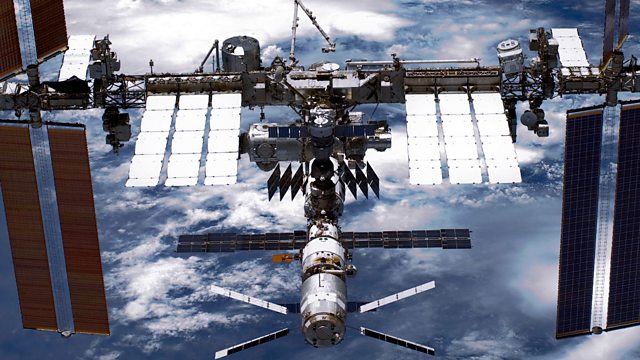Science on the ISS
Tim Peake arrives at ISS; Cosmonauts exhibition at Science Museum; research on the ISS; dangers of being in space
Jack Stewart marks Space Week on the World Service with a programme devoted to humans on the International Space Station and their achievements.
At the Cosmonauts exhibition at the Science Museum in London he talks to curator Doug Millard about the USSR’s space programme from the 1950s to 1990s. British astronaut Helen Sharman’s space suit is on display and she recalls her 8 day visit to the space station Mir in 1991.
Veteran Canadian astronaut Chris Hadfield explains the science experiments he carried out on the ISS.
Andrew Kuh from UK Space Agency, where he is responsible for microgravity research argues that the work done in space is more than just inspirational, and it does have applications that impact us all. He cites work on metals and on human ageing.
Life in space is tough on humans. For example, astronauts often experience visual problems because fluids in the body shift when there is no gravity. Dr Robert Marchbanks and Dr Tony Birch of Southampton General Hospital are devising a non invasive method of detecting these problems that can also be used on earth to determine the severity of head injuries.
The effects of isolation and detachment, as well as confinement with just a handful of other people, will become increasingly important as we contemplate longer journeys to Mars. Professor Mark Huckvale at University College London is developing sophisticated speech analysis to detect subtle changes in mood in astronauts’ voices.
As well as having to put up with mental stress, potentially dangerous changes to their bodies – weakened skeletons and worsening eyesight amongst them, the residents of the International Space Station face real and physical dangers. Cosmonaut Aleksandr Lazutkin, who spent 184 days on the Mir space station, recalls how he felt which he experienced a collision, a power cut and a fire.
And Dr Hugh Lewis of the Astronautics Research Group at the University of Southampton explains how lasers could be used to vaporise space debris that otherwise might damage the ISS and put the astronauts in danger.
Presenter: Jack Stewart
Editor: Deborah Cohen
(Photo: International Space Station © NASA)
Last on
More episodes
Previous
Broadcasts
- Thu 17 Dec 2015 20:32GMT91�ȱ� World Service UK DAB/Freeview, Online, Europe and the Middle East & Americas and the Caribbean only
- Thu 17 Dec 2015 21:32GMT91�ȱ� World Service West and Central Africa, East Asia, South Asia & Australasia only
- Fri 18 Dec 2015 02:32GMT91�ȱ� World Service Americas and the Caribbean
- Fri 18 Dec 2015 03:32GMT91�ȱ� World Service Online, UK DAB/Freeview, Europe and the Middle East & East Asia only
- Fri 18 Dec 2015 04:32GMT91�ȱ� World Service South Asia
- Fri 18 Dec 2015 05:32GMT91�ȱ� World Service Australasia
- Fri 18 Dec 2015 07:32GMT91�ȱ� World Service Europe and the Middle East & East and Southern Africa only
- Fri 18 Dec 2015 13:32GMT91�ȱ� World Service UK DAB/Freeview & Online only
- Fri 18 Dec 2015 14:32GMT91�ȱ� World Service Europe and the Middle East, East and Southern Africa, East Asia, West and Central Africa & South Asia only
Featured in...
![]()
Space
The eclipse, visionary astronomers and our fascination with the cosmos
Podcast
-
![]()
Science In Action
The 91�ȱ� brings you all the week's science news.



